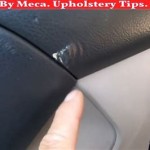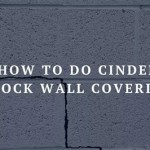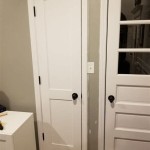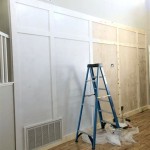Are Interior French Drains Effective? A Comprehensive Analysis
Interior French drains, also known as perimeter drains or basement drainage systems, are a common solution for managing water intrusion in basements and crawl spaces. The effectiveness of these systems is a topic of frequent discussion among homeowners, contractors, and building science professionals. Understanding the principles of operation, proper installation techniques, and the specific conditions under which they excel is crucial for evaluating their overall efficacy. This article provides a detailed examination of interior French drains, outlining their functionality, advantages, limitations, and factors influencing their performance.
The primary purpose of an interior French drain is to intercept water before it enters the living space. This is achieved by creating a channel along the perimeter of the basement floor where it meets the wall. This channel acts as a collection point for water that seeps through the foundation walls or rises through the floor. The collected water is then diverted to a sump pump, which discharges it away from the building. Unlike exterior French drains which are installed outside the foundation, interior systems work from within the existing structure, often making them a more accessible and less disruptive option for homeowners dealing with water issues.
The construction of a typical interior French drain involves several key steps. First, a trench is excavated around the interior perimeter of the basement. This trench is usually several inches wide and deep. A perforated pipe, typically made of PVC or corrugated plastic, is then placed within the trench. The pipe is surrounded by gravel or crushed stone, which acts as a filter, preventing soil and debris from entering and clogging the pipe. The gravel-filled trench is then often covered with a layer of concrete to create a smooth, walkable surface. The pipe is sloped slightly towards the sump basin, ensuring that water flows freely towards the pump.
Understanding the Mechanism of Water Intrusion
To fully appreciate the effectiveness of interior French drains, it's important to understand the ways in which water can infiltrate a basement. Water intrusion can occur through several pathways, including hydrostatic pressure, capillary action, and surface water runoff. Hydrostatic pressure is the force exerted by water in the soil against the foundation walls. This pressure can drive water through cracks, porous concrete, or the joint between the wall and the floor. Capillary action refers to the ability of water to move through small spaces in the concrete or soil, allowing it to wick its way into the basement. Surface water runoff from rain or snowmelt can also contribute to water intrusion, especially if the grading around the house slopes towards the foundation.
Interior French drains primarily address water intrusion caused by hydrostatic pressure and capillary action rising through the cove joint. By intercepting the water at the perimeter of the basement, they prevent it from accumulating on the floor or saturating the walls. They are less effective at addressing major structural cracks or significant surface water runoff issues, which may require alternative solutions such as exterior waterproofing or improved grading.
The success of an interior French drain hinges on its ability to effectively collect and redirect water before it causes damage. This depends on factors such as the permeability of the surrounding soil, the volume of water entering the system, and the capacity of the sump pump. In situations where the soil is highly permeable and the water table is high, an interior French drain can be a very effective solution. However, in situations where the soil is dense and clay-rich, or where there are significant structural issues with the foundation, additional measures may be necessary.
Advantages of Interior French Drains
There are several advantages to using interior French drains compared to other waterproofing methods. One of the most significant advantages is the relative ease and cost-effectiveness of installation. Because the work is performed inside the basement, it is less disruptive to the yard and landscaping than exterior excavation. This also means that interior systems can typically be installed year-round, regardless of weather conditions.
Another advantage is the ability to address water intrusion problems without disturbing the exterior of the foundation. This is particularly useful in situations where access to the exterior is limited due to landscaping, patios, or other obstructions. Interior French drains can also be a good option for older homes where exterior excavation could potentially damage existing utilities or compromise the structural integrity of the foundation.
Furthermore, interior French drains provide a visible means of monitoring the effectiveness of the system. Homeowners can easily observe the water level in the sump basin and ensure that the pump is functioning correctly. This allows for early detection of any problems and timely intervention to prevent water damage. By intercepting the water before it enters the living space, interior French drains can help to prevent mold growth, reduce humidity, and improve the overall air quality in the basement.
Limitations and Considerations
Despite their advantages, interior French drains also have certain limitations that must be considered. One limitation is their inability to address structural issues with the foundation. If the foundation walls are severely cracked or damaged, an interior French drain may not be sufficient to prevent water intrusion. In such cases, structural repairs may be necessary in addition to the drainage system.
Another limitation is the potential for the system to become clogged over time. Although the gravel and filter fabric help to prevent soil and debris from entering the pipe, some sediment can still accumulate and reduce the system's effectiveness. Regular maintenance, such as flushing the pipes and cleaning the sump basin, is necessary to ensure that the system continues to function properly.
Furthermore, interior French drains can only address water intrusion that occurs at or below the level of the basement floor. They are not effective at preventing water from entering through cracks in the walls above the floor level. In such cases, other waterproofing methods, such as applying a waterproof coating to the exterior walls, may be necessary.
The effectiveness of an interior French drain also depends on the proper installation and maintenance of the sump pump. The sump pump must be sized appropriately for the volume of water that the system is expected to handle, and it must be maintained regularly to ensure that it is functioning reliably. A backup sump pump or battery backup system is recommended to provide protection in case of power outages or pump failures. Additionally, the discharge line from the sump pump must be properly routed to ensure that the water is discharged away from the foundation and does not flow back towards the house.
The choice between an interior and exterior French drain depends on various factors, including the specific conditions of the site, the type of water intrusion problem, and the homeowner's budget. In many cases, a combination of both interior and exterior systems may be the most effective solution. A thorough assessment of the site by a qualified professional is essential to determine the best approach.
In conclusion, the effectiveness of interior French drains is contingent upon proper installation, appropriate site conditions, and regular maintenance. While not a universal solution for all basement water problems, they offer a valuable and often cost-effective approach to managing hydrostatic pressure and capillary action in many homes. Understanding their strengths and limitations is crucial for making informed decisions about basement waterproofing.

Footing Drain Interior French Pros And Cons Sani Tred

How Do Interior French Drains Work Learn More Steel City Waterstoppers Foundation Repair

French Drain Installation In Kansas City

Interior Vs Exterior Drainage Systems Basement Inc Press Release

Interior Vs Exterior French Drains Which System Is Best

French Drain Vs Waterguard Interior Drainage System

The Role Of French Drains In Effective Basement Waterproofing Guardian

Interior French Drain Faqs Basement Waterproofing By D Bug

Why French Drains Are The Secret To A Dry Pittsburgh Drain Guys

How A French Drain Basement Keeps Your Home Dry And Safe
Related Posts








